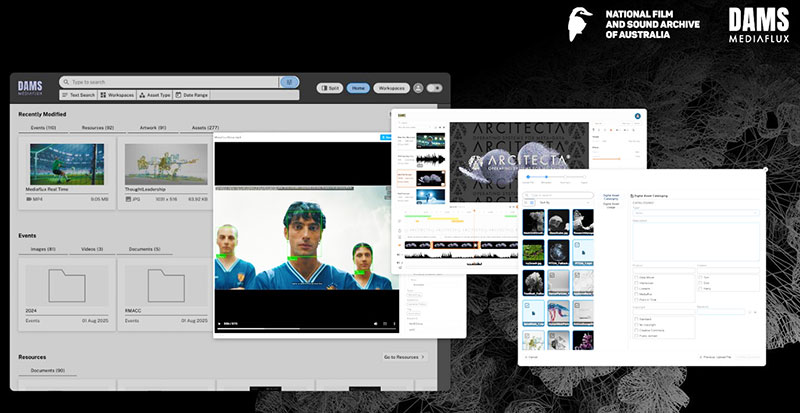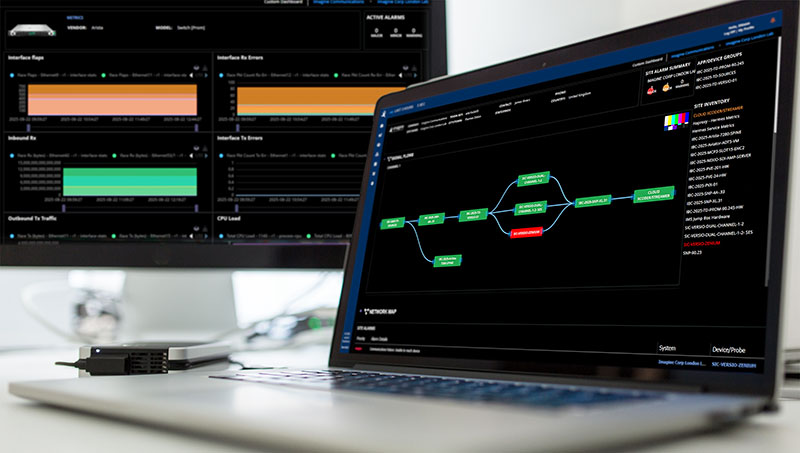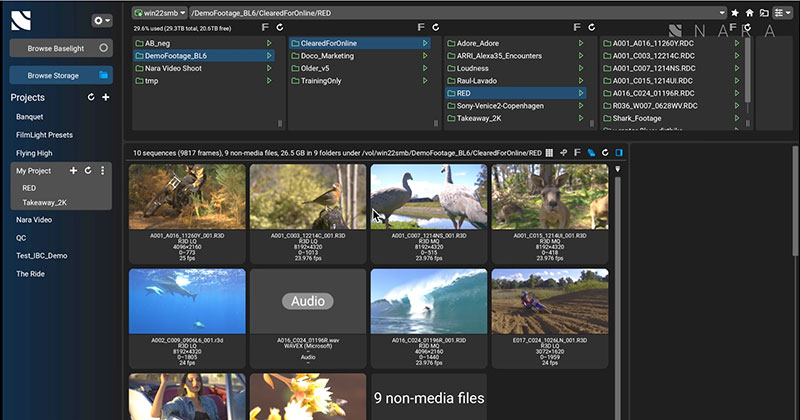Skip Levens at Quantum talks through the Quantum workflow for content creators from file systems and object storage to cloud environments, uncovering connections between products.
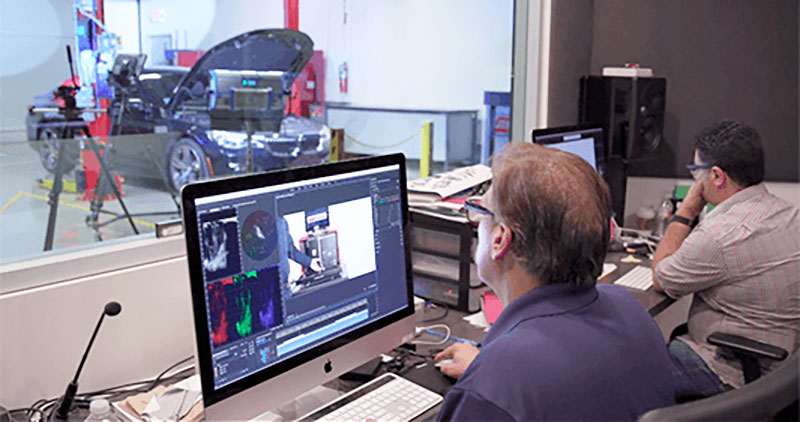
Skip Levens, Product Marketing and Development at Quantum, recently took time to talk to Digital Media World about the company’s products, latest updates and where the company is headed through the year and beyond. “Quantum’s focus at NAB 2025 was on Work + Flow – that is, making workflows really flow,” Skip said. “When you’re working with Quantum and its products, it’s important to think of them as a platform of tools, ready to build into workflows.
“Starting with shared, active storage, StorNext is a high-speed, efficient shared file system developed for post production workflows and collaboration between remote teams. It can scale performance and capacity for TV, film and marketing workflows, for example, that run at a fast pace, and integrate storage with archiving and retrieval on tape, object storage or cloud in one connected platform.”
Data Intensive
To handle data-intensive workloads for AI / ML, VFX and rendering, a different kind of demand, the Quantum Myriad all-flash, software-defined storage platform is cloud-native and gives direct access to fast NVMe hardware in an intelligent storage environment. Made up of microservices and deployed with Kubernetes, Myriad can respond automatically to system changes – discovering, configuring and re-balancing storage nodes in a cluster.
These factors, added to the fact that it does not use proprietary hardware, mean that an organisation can use Myriad to gain the agility to address hybrid- and multi-cloud options for managing unstructured data, set up simpler networks and control costs ranging from admin, power and cooling to data centre fees. Myriad is less dependent on manual intervention, and can generate greater performance within a smaller footprint.
“Alongside Myriad, organisations can use Quantum’s ActiveScale object storage as they consolidate and manage massive amounts of data for data-intensive workflows and, ultimately, AI pipelines,” said Skip. “Unusual as object storage that works for both active and cold data, ActiveScale is simple, reliable, prioritises long-term durability of massive data sets. At the same time supports high-performance access. Policy-based lifecycle management is built-in.”
Workflow Support - Saving Time
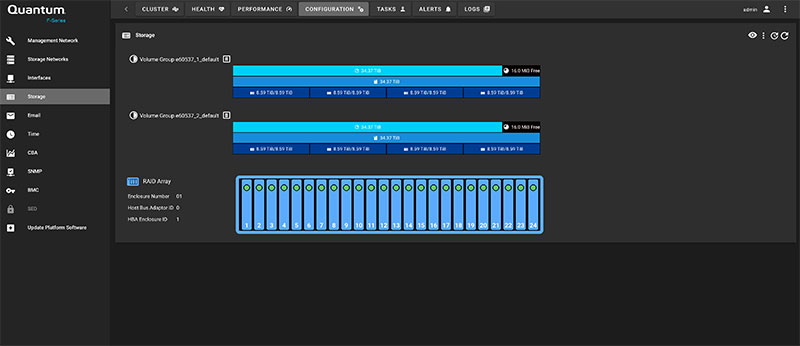
Configuring storage management.
A number of the innovations shown at NAB 2025 were direct enhancements to support workflows involving these three product – StorNext, Myriad and ActiveScale. An example is the new 3.2 version of FlexSync, which works as a file replication engine for multi-site collaboration and hybrid workflows, protecting data that is managed by StorNext. It creates local or remote replicas of file system data and metadata, either the entire system or just a specific directory.
Through the UI, the users can configure copy tasks, saving a lot of manual work. Designed to protect very large file systems, FlexSync can instantly determine the changes that have been made to a protected source file system, either to the files or the metadata, and incrementally synchronise the changes to a destination StorNext system. A sample use case might be automatically moving content between production sites and S3-compatible cloud or object storage.
Traversing through entire file systems to identify changes becomes unnecessary, reducing the time needed for file and data protection. Copy tasks can be set up in FlexSync that automatically replicate local or remote files wherever they are needed, while allowing users to access and restore the protected file data. Linux users can browse cloud repositories as folders and download content selectively, for faster access across environments.
New F2200 flash NVMe storage arrays are now available that reach the fastest recorded StorNext speeds of up to 90 GB/s of throughput, which makes them suitable for high-resolution video workflows, real-time editing and simultaneous streaming in demanding environments. They operate at capacities up to 737 TB in a 2U system, using Ethernet drivers in a dual-controller architecture where both controllers drive the 24 bays of NVMe Flash storage together, to achieve efficient load-balancing. The user can choose either four ports of 100 GbE or eight ports of 32 Gb Fibre Channel.
Tape in Archiving Workflows
As physical media, the scalability, low cost and security of tape for content archives has led to continued development as a practical storage option that requires very little power to store data for long periods. Within cloud environments and hyperscale infrastructure, it can serve as secure, long-term storage for compliance, digital media and image archiving. As a result, very large data centres are using tape.
Quantum’s Scalar series of tape libraries makes tape easier to manage with features like diagnostics for monitoring, and they can be integrated with ActiveScale Cold Storage and StorNext and used to set up a continuous content archiving workflow. The series now includes a new tape system for massively scalable content archiving, Scalar i7 RAPTOR, with up to 36 PB of native capacity on LT0-9 in a single cabinet with twice as much density per rack unit as traditional systems. All components are user-swappable.

Users can log and tag content automatically and locate media based on scenes, faces or objects.
Increasing storage density to this level reduces infrastructure costs, data centre space, power and cooling costs, maintenance and administration. The Scalar i7 includes ransomware protection and cyber resiliency features for securing private and hybrid clouds. It optimises data access time and enhances performance by avoiding complex mechanical designs that need excessive tape swapping.
Companies that want to perform analytics over time to characterise drive-media interactions, for example, predict robotic failure or gather critical system data can also use Scalar i7 to automate these analyses.
Asset Management
CatDV is Quantum’s asset management and workflow orchestration platform, and includes automation and collaboration tools. An asset management platform can help organizations expose and take advantage of the business value in their digital data. Managers can control access, archives can be indexed and searched across local and cloud repositories, and AI / ML systems can be used to enrich the data with metadata.
CatDV Express is a new downloadable option for the software, a self-installable media asset management platform for small teams and departments, supporting up to 25 users and 200,000 assets. Its purpose is easing the work of organising, searching and sharing media on existing storage - without engaging an IT team.
New CatDV AI voice transcription and translation functionality, and integrations with AI systems from Veritone, Scale Logic’s CaraOne and Axle AI, add content new search tools directly into CatDV. Users can log and tag content automatically through speech to text and automatic language translation, and locate media based on scenes, faces, objects, logos, emotions and other AI-detected metadata for fast content discovery and re-purposing. www.quantum.com






